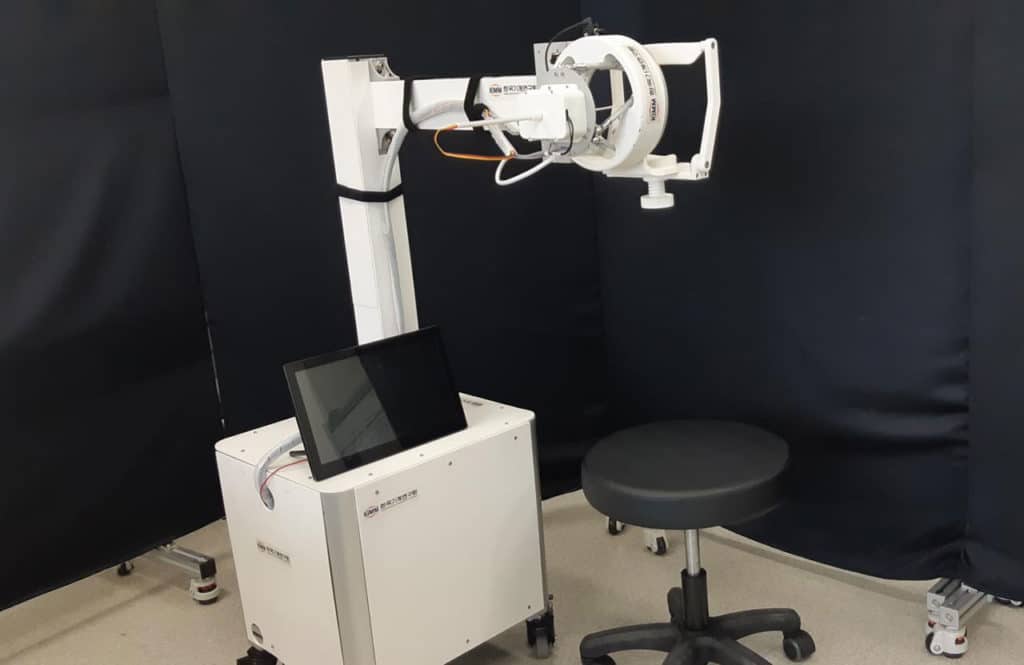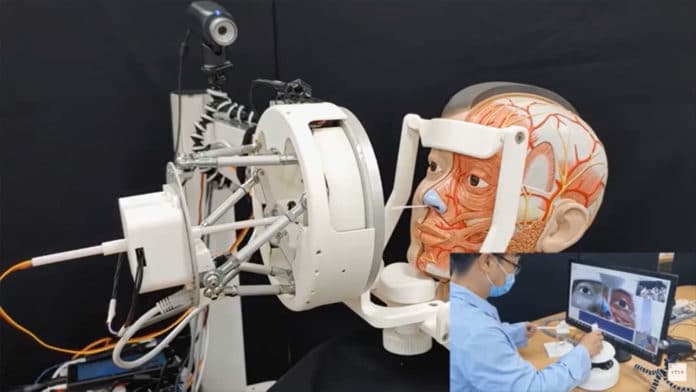Currently, the Coronavirus (COVID-19) swab tests are still being carried out by medical personnel. It is arguably a risky action, so that many people are looking for new ways to carry out swab tests more safely. The new robotic system is therefore intended to protect doctors and, at the same time, to save them from the inconvenient wearing of heavy protective clothing when taking samples.
The engineers from the Korea Institute of Machinery & Materials (KIMM) under the Ministry of Science and ICT are developing a remote specimen collection robot, which will prevent direct contact between medical personnel and patients. The robot could be used in an environment at a high risk of contamination, such as screening tests for the new Coronavirus (COVID-19).

The robot consists of a master device controlled by medical personnel and a slave robot that interacts with patients. The slave robot, which looks like an eye health checker, will move according to the operation performed from the master device. It is equipped with a disposable swab, like the one used for a COVID-19 test, to take samples from the patient’s nose and mouth.
The sampling swab of the slave robot moves or rotates according to the operation of the joystick-like control and a sliding rod-shaped control (to move it in and out) from the master device, and retrieves samples when inserted into the mouth or nose. The system also supports video and audio communication between patients and doctors.

Medical personnel can manipulate the robot by tracking the position of the swab in a patient’s nose or mouth in real-time using a camera. Precision and safety are also improved thanks to the ability to remotely monitor the force and pressure when introducing the swab.
Overall, the remote specimen collection robot promises safe, precise sampling without any direct personal contact. This is to avoid infection risks in COVID-19 or other diseases. There’s currently no word on when the system may enter clinical use.
“This technology allows samples to be retrieved from persons presenting symptoms of high-risk diseases even without direct contact,” Dr. Joonho Seo of KIMM said in a press release. “I expect it to be useful in the screening of high-risk diseases like COVID-19, and hope it will contribute to the safety and well-being of medical personnel during pandemics and epidemics.”
